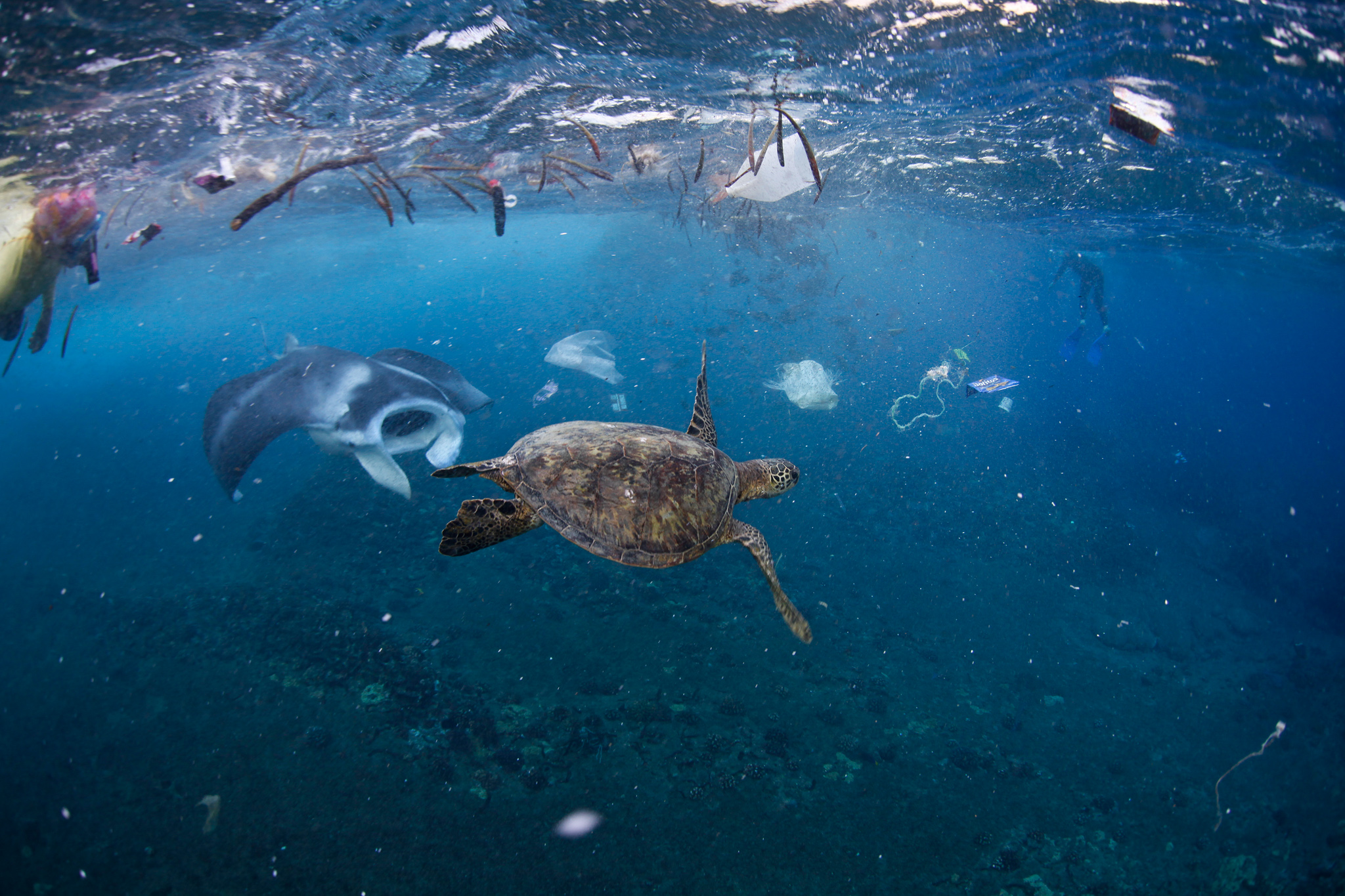By Livia Albeck-Ripka, The New York Times, March 22, 2018
 |
| Plastics kill ocean life like turtles. |
In the Pacific Ocean between California and Hawaii, hundreds of miles from any major city, plastic bottles, children’s toys, broken electronics, abandoned fishing nets and millions more fragments of debris are floating in the water — at least 87,000 tons’ worth, researchers said Thursday.
In recent years, this notorious mess has become known as the Great Pacific Garbage Patch, a swirling oceanic graveyard where everyday objects get deposited by the currents. The plastics eventually disintegrate into tiny particles that often get eaten by fish and may ultimately enter our food chain.
Researchers said nets made up a surprising proportion of the waste they identified.
A study published Thursday in the journal Scientific Reports quantified the full extent of the so-called garbage patch: It is four to 16 times bigger than previously thought, occupying an area roughly four times the size of California and comprising an estimated 1.8 trillion pieces of rubbish. While the patch was once thought to be more akin to a soup of nearly invisible microplastics, scientists now think most of the trash consists of larger pieces. And, they say, it is growing “exponentially.”
“It’s just quite alarming, because you are so far from the mainland,” said Laurent Lebreton, the lead author of the study and an oceanographer with the Ocean Cleanup Foundation, a nonprofit that is developing systems to remove ocean trash and which funded the study. “There’s no one around and you still see those common objects, like crates and bottles.”
In the late summer of 2015, Mr. Lebreton and his colleagues measured the amount of plastic debris in the patch by trawling it with nets and flying overhead to take aerial photographs. Though they also found glass, rubber and wood, 99.9 percent of what the researchers pulled out of the ocean was plastic.
They also recovered a startling number of abandoned plastic fishing nets, Mr. Lebreton said. These “ghost nets” made up almost half of the total weight of the debris. (One explanation is the patch’s proximity to fishing grounds; another is that fishing material is designed to be resilient at sea and stays intact longer than other objects.)
“We found a few unexpected objects,” Mr. Lebreton said. “Among them were plastic toys, which I found really sad, as some of them may have come from the tsunami in Japan,” he added, referring to the 2011 disaster that sent millions of tons of debris into the ocean.
The researchers also fished out a ’90s-era Game Boy cover, construction-site helmets and a toilet seat, as well as a number of objects with Japanese and Chinese inscriptions. Other objects, Mr. Lebreton said, had “little bite marks from fish.”
Some sea turtles caught near the patch were eating so much plastic that it made up around three-quarters of their diet, according to the foundation.
The garbage patch is not exactly a “patch”
After its discovery in the late ’90s, the Great Pacific Garbage Patch took on an image in the popular imagination akin to an island or even a seventh continent made of trash. That myth was debunked, and the patch became understood as more like a region that looked like the rest of the ocean to the naked eye, but was polluted with tiny microplastics.
However the new study says that the microplastics, while still a problem, account for just 8 percent of the mass of the patch. Until now, most of the sampling used an ocean trawl designed to pick up small particles, and therefore, Mr. Lebreton said, underestimated the number of larger pieces of debris floating in the sea, like bottles, buoys and fishing nets.
“Most of the mass is actually large debris, ready to decompose into microplastic,” Mr. Lebreton said.
Still, “it’s not an island,” Mr. Lebreton said. “It’s very scattered.” (A visual model, however, shows how the debris is condensed in one area in the ocean.)
"I think the name ‘patch’ is a little bit confusing,” said Nancy Wallace, the director of the National Oceanic and Atmospheric Administration’s Marine Debris Program, who was not involved in the study. Describing it that way, she said, gave the wrong impression that it “would be easy to go pick it up.”
There may still be time to act
The worry is that, within a few decades, the larger pieces of debris could break up into microplastics, which are much harder to remove from the ocean. “It’s like a ticking time bomb,” said Joost Dubois, a spokesman for the Ocean Cleanup Foundation.
The foundation says it would be almost impossible to remove the plastic already in the patch by traditional methods, like nets attached to boats. Instead, the group has developed a mechanical system that floats through the water and concentrates the plastics into denser areas that can then be collected by boats and taken back to shore to be recycled.
The foundation plans to launch the first such system this summer from Alameda, Calif.
No comments:
Post a Comment